20 Types of Graphic Designs in 2023
I would be happy to provide a brief explanation of the 20 types of graphic design mentioned earlier:
1.Branding design - Creating a visual identity for a company or product, including logos, typography, and other brand elements.
Branding design is the process of creating a visual and emotional identity for a product, service, or company that distinguishes it from competitors and creates a connection with its target audience. It involves the use of typography, colors, graphics, and other design elements to communicate the values, personality, and mission of a brand.
The branding design process typically begins with a discovery phase, in which the designer or design team conducts research to understand the brand's audience, competition, and market positioning. This information is then used to develop a brand strategy, which includes the brand's positioning, messaging, and visual identity.
The visual identity of a brand often includes a logo, color palette, typography, and other design elements that create a consistent and recognizable look and feel. These elements are applied across all brand touchpoints, including websites, social media, packaging, advertising, and more.
Effective branding design can help a brand to stand out in a crowded marketplace, create a memorable impression with consumers, and foster loyalty and trust among its target audience.
2.Logo design - Designing a visual symbol or mark that represents a company or product.
Logo design is the process of creating a unique symbol or visual representation that represents a company, product, or service. It is an important part of branding and marketing efforts, as it helps to establish a recognizable and memorable identity for the brand.
The logo design process typically begins with a discovery phase, in which the designer or design team conducts research to understand the brand's values, personality, and target audience. This information is then used to develop initial concepts and sketches for the logo.
The designer then refines the concepts and selects the most promising options to present to the client for feedback. Based on the client's feedback, the designer makes revisions and refinements until the final logo design is approved.
A successful logo design should be simple, memorable, and easily recognizable. It should also be scalable and versatile, so that it can be used across a variety of mediums and applications, from business cards to billboards.
Effective logo design can help to establish a strong visual identity for a brand, differentiate it from competitors, and create a sense of trust and familiarity with consumers.
3.Print design - Designing layouts and visuals for printed materials, such as brochures, flyers, and posters.
Print design is the process of creating visual materials that are printed on physical media, such as brochures, business cards, posters, packaging, and more. It involves the use of typography, color, images, and other design elements to communicate information and create a visually appealing product.
The print design process typically begins with a design brief, in which the designer or design team works with the client to understand their goals, target audience, and desired outcomes. The designer then develops initial concepts and sketches, and presents them to the client for feedback and approval.
Once the design is approved, the designer creates high-quality digital files that are ready for printing. This process may involve working closely with a print vendor to ensure that the final product meets the client's specifications and quality standards.
Effective print design can help to promote a brand or product, communicate information clearly and effectively, and create a memorable impression with consumers. It requires a keen eye for detail, a deep understanding of typography and layout, and a strong knowledge of printing processes and techniques.
4.Packaging design - Creating the visual elements of product packaging, including labels, boxes, and bags.
Packaging design is the process of creating an attractive and functional package or container for a product. It involves the use of visual and graphic design elements, as well as structural considerations, to create a package that protects the product, communicates its value and benefits, and appeals to the target audience.
The packaging design process typically begins with research to understand the product, target audience, and competition. The designer then creates initial concepts and sketches, taking into account factors such as the shape and size of the product, materials, printing methods, and regulatory requirements.
Once the initial design is approved, the designer works on refining and finalizing the design, taking into account feedback from the client, stakeholders, and potential customers. This may involve creating 3D renderings or physical mockups to test the design and ensure that it functions properly and meets the client's requirements.
Effective packaging design can help to create a positive first impression with consumers, differentiate the product from competitors, and communicate its unique value proposition. It requires a strong understanding of branding and marketing, as well as technical knowledge of materials, printing, and manufacturing processes.
5.Product design - Designing the visual appearance and user experience of physical products, such as consumer electronics and furniture.
Product design is the process of creating a physical or digital product that meets the needs and desires of its intended users. It involves the development of ideas and concepts, the creation of prototypes, and the testing and refinement of the product until it is ready for manufacturing or release.
The product design process typically begins with research to understand the user's needs and pain points, as well as the competitive landscape and market trends. The designer then creates initial concepts and sketches, taking into account factors such as functionality, aesthetics, ergonomics, and manufacturing feasibility.
Once the initial design is approved, the designer works on creating detailed specifications and technical drawings, as well as 3D models or physical prototypes for testing and validation. The product may go through several rounds of testing and refinement before it is ready for launch.
Effective product design can help to create products that are both functional and desirable, meeting the needs and desires of the user while also providing a unique value proposition that differentiates it from competitors. It requires a strong understanding of engineering, manufacturing, materials science, and user experience, as well as creativity and innovation.
6.Environmental design - Designing graphics and signage for physical spaces such as retail stores, museums, and exhibitions.
Environmental design is the process of designing physical spaces to create a cohesive and functional environment that is both aesthetically pleasing and functional. It involves the use of design principles and elements to create spaces that meet the needs of their users, while also taking into account environmental factors such as sustainability, accessibility, and safety.
Environmental design can encompass a wide range of spaces, from public parks and plazas to buildings, interiors, and urban landscapes. It may involve the use of natural and man-made materials, as well as the incorporation of sustainable practices such as green roofs, rain gardens, and energy-efficient lighting.
The environmental design process typically begins with research to understand the needs and desires of the users, as well as the environmental and regulatory constraints that must be considered. The designer then creates initial concepts and sketches, taking into account factors such as layout, materials, lighting, and landscaping.
Once the design is approved, the designer works on refining and finalizing the design, taking into account feedback from the client, stakeholders, and potential users. This may involve working closely with architects, engineers, and other professionals to ensure that the design is feasible and meets all necessary standards and regulations.
Effective environmental design can help to create spaces that are both functional and aesthetically pleasing, while also promoting sustainability, accessibility, and safety. It requires a strong understanding of design principles, as well as knowledge of environmental and sustainability practices and regulations.
7.UI/UX design - Designing user interfaces and experiences for digital products such as apps and software.
UI/UX design is the process of creating an effective and engaging user interface (UI) and user experience (UX) for a digital product or application, such as a website, mobile app, or software program. It involves the use of design principles, user research, and usability testing to create a product that is easy to use, visually appealing, and functional.
The UI design process typically begins with research to understand the user's needs and pain points, as well as the competitive landscape and market trends. The designer then creates initial concepts and sketches, taking into account factors such as functionality, aesthetics, and user flow.
Once the initial UI design is approved, the designer works on creating detailed specifications and technical drawings, as well as interactive wireframes or prototypes for testing and validation. The product may go through several rounds of testing and refinement before it is ready for launch.
The UX design process involves designing and optimizing the entire user experience, from initial user engagement to post-use feedback and support.
This may involve conducting user research, developing user personas, creating user journey maps, and performing usability testing to ensure that the product is easy to use, intuitive, and effective in meeting user needs.
Effective UI/UX design can help to create digital products that are both functional and aesthetically pleasing, meeting the needs and desires of the user while also providing a unique value proposition that differentiates it from competitors. It requires a strong understanding of human-centered design, as well as technical knowledge of software development and programming languages.
8.Web design - Designing visual layouts and user experiences for websites.
Web design is the process of creating an attractive, functional, and user-friendly website. It involves the use of visual and graphic design elements, as well as technical considerations such as coding, programming, and website architecture, to create a website that meets the needs and desires of its intended users.
The web design process typically begins with research to understand the user's needs and preferences, as well as the competitive landscape and market trends. The designer then creates initial concepts and wireframes, taking into account factors such as layout, typography, color scheme, and functionality.
Once the initial design is approved, the designer works on refining and finalizing the design, taking into account feedback from the client, stakeholders, and potential users.
This may involve working closely with web developers and programmers to ensure that the design is feasible and meets all necessary standards and regulations.
Effective web design can help to create websites that are both visually appealing and easy to use, providing a positive user experience that encourages engagement and interaction. It requires a strong understanding of design principles, as well as technical knowledge of web development, programming languages, and website optimization techniques.
9.App design - Designing the visual appearance and user experience of mobile apps.
App design is the process of creating an effective and user-friendly interface for a mobile application. It involves the use of design principles, user research, and usability testing to create an app that is easy to use, visually appealing, and functional.
Effective app design can help to create mobile applications that are both functional and aesthetically pleasing, meeting the needs and desires of the user while also providing a unique value proposition that differentiates it from competitors.
It requires a strong understanding of human-centered design, as well as technical knowledge of mobile app development and programming languages. Additionally, app design also needs to consider the differences in user behavior and user interface on different platforms, such as iOS and Android.
10.Motion graphics - Creating animations, videos, and other moving graphics for websites, social media, and advertising.
It involves combining graphic design, animation, and filmmaking techniques to bring visual elements to life in a way that communicates a message or tells a story.
Effective motion graphics can help to convey complex ideas and information in a way that is engaging, memorable, and easy to understand. It can be used in a variety of contexts, such as advertising, explainer videos, social media content, and educational materials.
Motion graphics designers need to have a strong understanding of graphic design principles, animation techniques, and video production, as well as technical knowledge of animation software and video editing tools. They also need to have a creative eye for detail and a strong sense of storytelling to create content that effectively communicates its intended message.
11.Video editing - Editing and creating videos for various platforms, such as social media, advertisements, and websites.
Video editing is the process of selecting, combining, and manipulating video footage, audio, and other visual elements to create a final product. It involves the use of specialized software to edit, enhance, and refine raw footage into a polished and professional video.
The video editing process typically involves several steps, including importing footage into the editing software, organizing and selecting the best clips, assembling the clips into a coherent narrative or sequence, adding transitions, sound effects, music, and special effects, and color grading and finalizing the video.
Effective video editing can help to create videos that are engaging, informative, and visually appealing. It requires a strong understanding of visual storytelling, technical knowledge of video editing software, and an ability to work with raw footage to create a cohesive and compelling final product.
Video editors need to have a strong attention to detail, as well as creativity and problem-solving skills to find the best ways to tell a story or convey a message through video. They also need to be able to work efficiently under tight deadlines and manage multiple projects simultaneously.
12.Illustration - Creating hand-drawn or digital illustrations for books, magazines, advertisements, and other print or digital media.
Illustration involves creating images that are aesthetically pleasing and communicate a specific message or emotion. It requires a strong understanding of composition, color theory, and drawing techniques, as well as an ability to work with different materials and mediums.
The illustration process typically begins with ideation and concept development, followed by rough sketches and refinement of the chosen concept. Once the sketch is finalized, the illustrator may work with traditional media such as pencils, paint, or ink, or use digital tools such as graphic tablets and software like Adobe Illustrator or Procreate to create the final illustration.
Effective illustration can help to capture the viewer's attention, evoke emotion, and convey complex ideas or messages in a way that is easy to understand. It requires a strong sense of visual storytelling, attention to detail, and the ability to adapt to different styles and aesthetics based on the needs of the project.
Illustrators may work as freelancers or for companies such as advertising agencies, publishing houses, or design studios. They need to be able to communicate effectively with clients and other team members, manage their time and deadlines, and constantly improve their skills to stay competitive in the industry.
13.Infographic design - Creating visual representations of complex data or information using graphics, charts, and diagrams.
Infographic design is the art of creating visually compelling and informative graphics that present complex information in a clear and easily digestible format. Infographics can be used to convey data, statistics, or other information in a way that is more engaging and memorable than plain text.
The process of creating an infographic typically involves collecting and organizing data, identifying the key insights and trends, and deciding on the most effective way to visually present the information. This can involve choosing colors, typography, and graphics that are both aesthetically pleasing and effective at communicating the information.
Effective infographic design requires a strong understanding of information design principles, as well as skills in graphic design, data analysis, and visual storytelling. It also involves the use of specialized software such as Adobe Illustrator, Canva, or Piktochart to create the final infographic.
Infographics can be used in a variety of contexts, including marketing, journalism, education, and research. They are particularly effective for social media, as they can be easily shared and are often more visually engaging than other types of content.
Infographic designers need to be able to communicate complex information in a simple and clear way, while also creating designs that are aesthetically pleasing and engaging. They must be able to work efficiently under tight deadlines and manage multiple projects simultaneously, as well as constantly update their skills to stay current with new design trends and software.
14.Presentation design - Creating visually appealing and informative presentations for business, education, or other purposes.
Presentation design is the art of creating visually engaging and effective slideshows, typically using software such as Microsoft PowerPoint or Apple Keynote. The goal of presentation design is to help communicate a message, idea, or data set to an audience in a clear and compelling way.
Effective presentation design requires a strong understanding of design principles, such as typography, color theory, and visual hierarchy. It also involves the use of images, charts, and graphs to support the content of the presentation, as well as animations and transitions to add interest and engagement.
The process of creating a presentation typically involves identifying the key messages and content to be conveyed, developing a visual theme or template, and creating individual slides that support the content. Effective presentation designers also consider the audience and the context in which the presentation will be given, such as the size of the audience and the type of setting.
Presentation design is used in a variety of contexts, including business, education, and public speaking. It can also be used for marketing and advertising purposes, such as creating a pitch deck for a new product or service.
Presentation designers need to be able to work quickly and efficiently, as well as manage multiple projects simultaneously. They must also be able to communicate effectively with clients or presenters to understand their needs and expectations, and be able to adjust their design accordingly. In addition, they should be able to stay up-to-date with the latest design trends and software.
15.Icon design - Creating small, symbolic graphics to represent concepts, actions, or objects in digital interfaces.
Icon design is the process of creating small, simplified graphics or symbols that represent a concept, object, or action. Icons are often used in user interfaces, on websites, and in mobile applications to represent functions or features in a clear and visually appealing way.
Effective icon design requires an understanding of visual communication principles, as well as a good sense of design and creativity. Icons should be simple and easy to recognize, while also being visually engaging and aesthetically pleasing. They should also be consistent with the overall visual style of the product or interface they are being used in.
Icon designers typically use vector graphics software such as Adobe Illustrator or Sketch to create icons. They may also use icon design libraries or templates to speed up the design process and ensure consistency with other icons in the same set.
Icons are used in a wide range of contexts, including mobile apps, desktop software, websites, and print materials. They can also be used for branding purposes, such as creating a logo or symbol for a company or product.
Icon designers must be able to work quickly and efficiently, as well as manage multiple projects simultaneously. They must also be able to communicate effectively with clients or stakeholders to understand their needs and expectations, and be able to adjust their designs accordingly. In addition, they should be able to stay up-to-date with the latest design trends and best practices.
16.Social media graphics - Creating visual content for social media platforms, such as images and videos for posts and ads.
Social media graphics are visual elements, such as images or videos, that are specifically created for use on social media platforms. These graphics can be used to promote a brand, communicate a message, or engage with followers.
Effective social media graphics are visually engaging and attention-grabbing, while also being consistent with a brand's overall visual identity. They should be designed with the specific platform in mind, taking into account the platform's image size and format requirements.
Social media graphics can take many different forms, including images with text overlays, animated GIFs, and short videos. They can be used for a variety of purposes, such as promoting a product or service, announcing an event or sale, or sharing informative or entertaining content.
Creating social media graphics requires a strong understanding of design principles, as well as an understanding of the target audience and the specific platform being used. Graphic designers may use software such as Adobe Photoshop or Canva to create social media graphics.
Social media graphics can be used on a variety of social media platforms, including Facebook, Instagram, Twitter, LinkedIn, and Pinterest. They can be a powerful tool for building a brand's online presence, increasing engagement with followers, and driving traffic to a website or online store.
17.Book cover design - Designing the visual appearance of book covers, including illustrations, typography, and layout.
Book cover design is the process of creating a visually compelling and engaging cover for a book, typically in print or digital format. The goal of book cover design is to attract potential readers and communicate the book's content, tone, and genre.
Effective book cover design requires a strong understanding of design principles, such as typography, color theory, and composition. It also involves researching the target audience and the competitive landscape to create a cover that stands out from other books in the same genre.
The process of creating a book cover typically involves working closely with the author or publisher to understand the book's content and target audience, as well as developing multiple design concepts and refining the chosen design. The final design should be aesthetically pleasing, legible, and recognizable at various sizes and formats.
Book cover designers may use software such as Adobe Photoshop or Illustrator to create the design, and may collaborate with photographers or illustrators to create custom artwork or images.
Book cover design is an important aspect of book marketing and can play a significant role in whether a book is successful or not. A well-designed book cover can attract attention, generate interest, and ultimately lead to more sales and readership.
18.T-shirt design - Creating designs for printed T-shirts, often for branding or merchandising purposes.
Effective T-shirt design requires a strong understanding of design principles, as well as an understanding of the target audience and the purpose of the T-shirt. The design should be visually appealing, legible, and communicate a message or concept that resonates with the target audience.
The process of creating a T-shirt design typically involves sketching out ideas and concepts, creating digital artwork using software such as Adobe Illustrator or Photoshop, and testing the design on mockups to ensure it looks good when printed.
T-shirt designers may also need to consider the type of printing process that will be used, such as screen printing, heat transfer, or digital printing, as each process has its own limitations and requirements.
T-shirt designs can be used for a variety of purposes, such as promoting a brand, supporting a cause or event, or simply creating a fashionable or unique piece of clothing.
Successful T-shirt designs can generate interest, drive sales, and help to establish a brand's identity. T-shirt designers must be able to create designs that are not only visually appealing but also appropriate for the intended audience and purpose.
19.Exhibition design - Designing exhibits and displays for museums, trade shows, and other events.
Exhibition design is the process of creating a visually compelling and engaging environment for an exhibition, typically in a museum, gallery, or trade show setting. The goal of exhibition design is to create a space that effectively communicates a message or concept, while also engaging and educating the audience.
Effective exhibition design requires a strong understanding of design principles, as well as an understanding of the target audience and the goals of the exhibition. The design should be visually appealing, interactive, and appropriate for the intended audience.
The process of creating an exhibition design typically involves working closely with the curators or organizers to understand the content and objectives of the exhibition, developing multiple design concepts, and refining the chosen design. Exhibition designers may create 3D models or use software such as SketchUp to visualize the design in the exhibition space.
Exhibition design can include a variety of elements, such as graphics, lighting, multimedia, and interactive exhibits. Successful exhibition design can create a memorable experience for visitors and effectively communicate the message or concept of the exhibition.
Exhibition designers may work for museums, galleries, or design firms specializing in exhibition design. They must be able to balance aesthetics with functionality and effectively communicate complex ideas through design.
20.Advertising design - Creating designs for print or digital advertisements, including banners, billboards, and social media ads.
Advertising design is the process of creating visual and textual elements used in ads to promote a product, service, or brand. Effective advertising design requires a strong understanding of design principles, copywriting, and marketing strategy.
The process of creating an advertising design typically involves working closely with the client or advertising agency to understand the target audience, objectives, and desired messaging. Advertising designers may develop multiple concepts and refine the chosen design based on client feedback.
Advertising design can take many forms, including print ads, digital ads, billboards, social media ads, and more. The design elements may include imagery, typography, color schemes, and branding elements.
Successful advertising design can capture the attention of the target audience, communicate a clear message, and motivate the audience to take action, such as making a purchase or visiting a website. It is an important part of marketing strategy and can contribute significantly to the success of a brand or product.
Advertising designers may work in-house for a company or for an advertising agency. They must be able to create designs that stand out from the competition, effectively communicate the desired message, and adhere to brand guidelines. They may also need to be familiar with the latest design software and technologies to create effective advertising designs.
These are some of the most common types of graphic design in 2023, and they are used to create a wide range of visual content for various purposes and platforms.
20 types of designing
- Branding design - Creating a visual identity for a company or product, including logos, typography, and other brand elements.
- Logo design - Designing a visual symbol or mark that represents a company or product.
- Print design - Designing layouts and visuals for printed materials, such as brochures, flyers, and posters.
- Packaging design - Creating the visual elements of product packaging, including labels, boxes, and bags.
- Product design - Designing the visual appearance and user experience of physical products, such as consumer electronics and furniture.
- Environmental design - Designing graphics and signage for physical spaces such as retail stores, museums, and exhibitions.
- UI/UX design - Designing user interfaces and experiences for digital products such as apps and software.
- Web design - Designing visual layouts and user experiences for websites.
- App design - Designing the visual appearance and user experience of mobile apps.
- Motion graphics - Creating animations, videos, and other moving graphics for websites, social media, and advertising.
- Video editing - Editing and creating videos for various platforms, such as social media, advertisements, and websites.
- Illustration - Creating hand-drawn or digital illustrations for books, magazines, advertisements, and other print or digital media.
- Infographic design - Creating visual representations of complex data or information using graphics, charts, and diagrams.
- Presentation design - Creating visually appealing and informative presentations for business, education, or other purposes.
- Icon design - Creating small, symbolic graphics to represent concepts, actions, or objects in digital interfaces.
- Social media graphics - Creating visual content for social media platforms, such as images and videos for posts and ads.
- Book cover design - Designing the visual appearance of book covers, including illustrations, typography, and layout.
- T-shirt design - Creating designs for printed T-shirts, often for branding or merchandising purposes.
- Exhibition design - Designing exhibits and displays for museums, trade shows, and other events.
- Advertising design - Creating designs for print or digital advertisements, including banners, billboards, and social media ads.
For more designs you can click this link:
https://www.behance.net/sanjanavempala







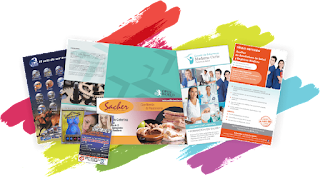




















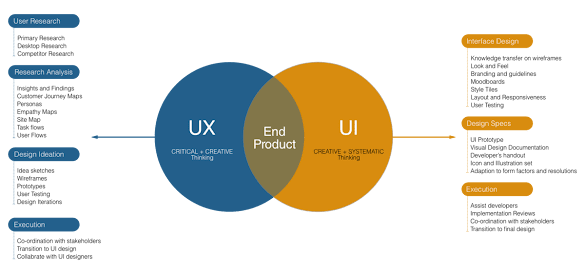








































































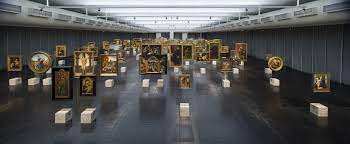





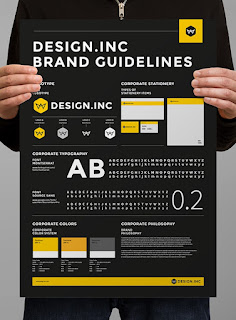
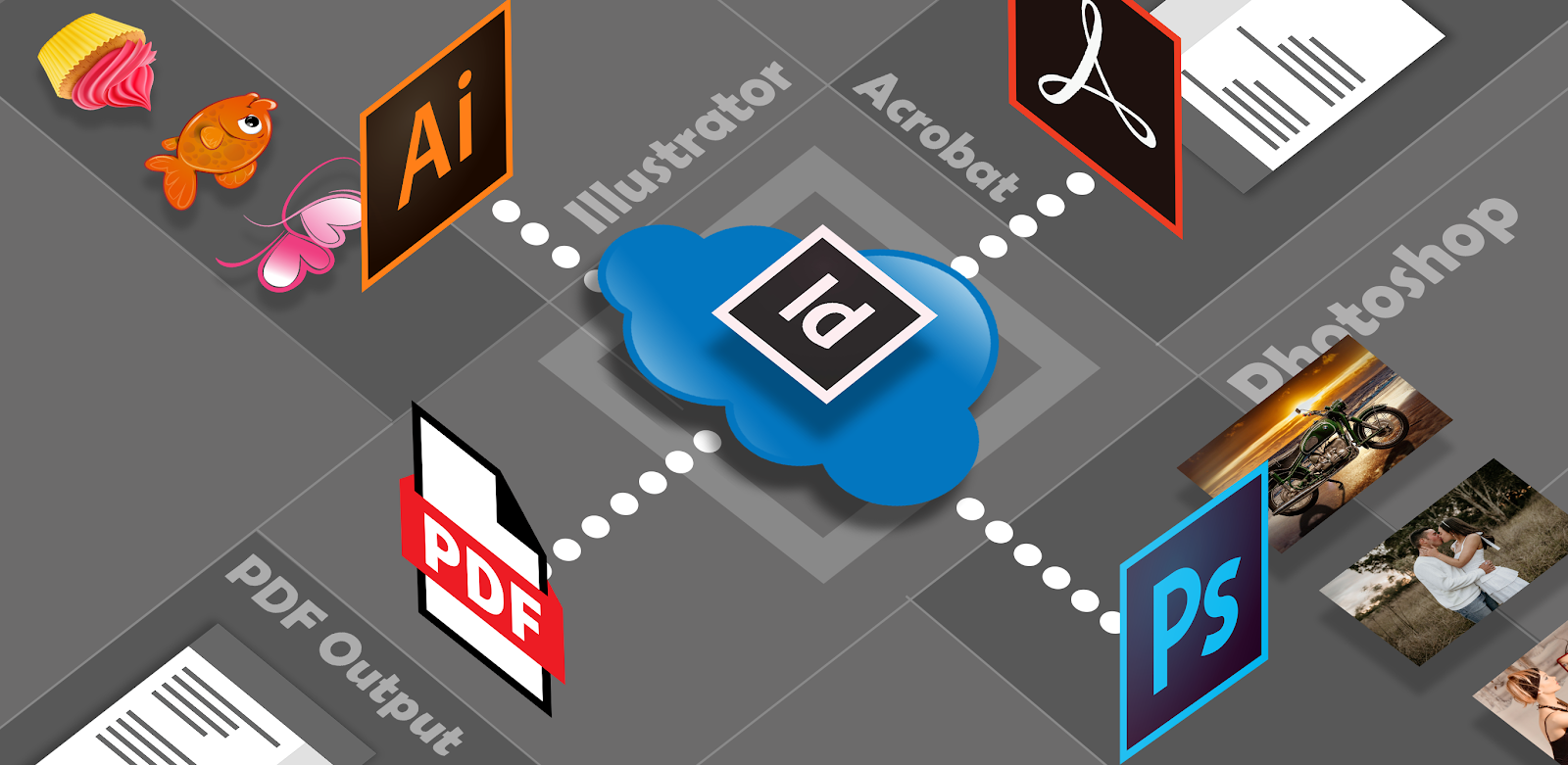

Comments
Post a Comment